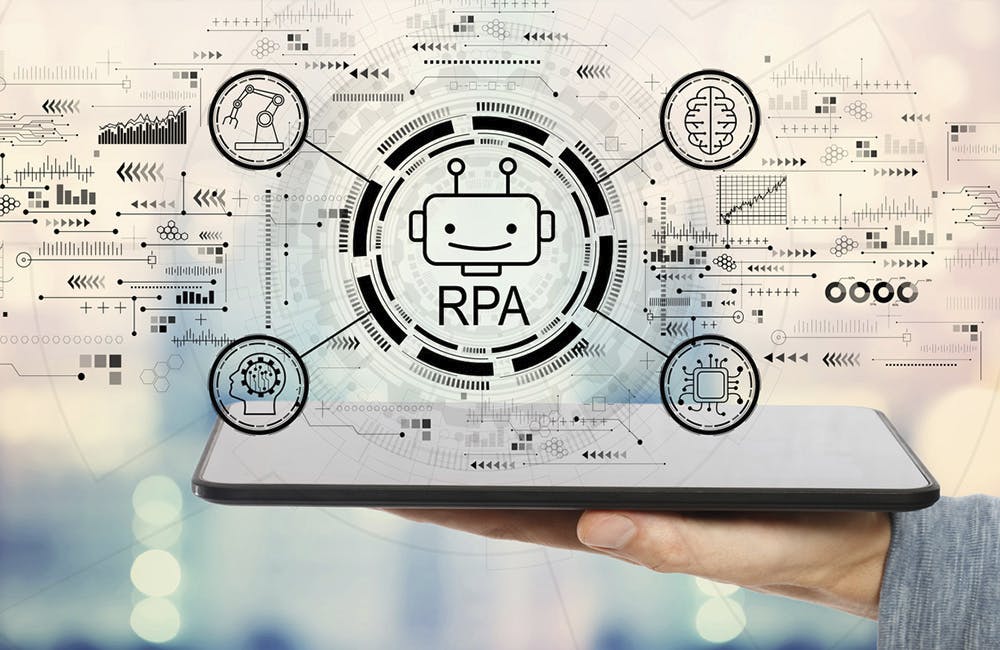GSA’s RPA Success Story Provides a Template for Widespread Agency Adoption
RPA fundamentally changed how employees work at the agency by freeing up time spent on manual tasks.

Since the General Services Administration’s initial investment in robotic process automation, the agency added 75 automations, which are averaging above the expected 2,000 hours of added work capacity.
They’re averaging more like 3,400 additional hours of work capacity, said Program Manager James Gregory.
“The goal of 2,000 is really geared around freeing up one resource for more complex work, whether that be more analysis, technical issues or providing more customer service,” Gregory told GovernmentCIO Media & Research. “It frees up that employee to do more. It’s not always one-to-one, but that’s our goal. We want to provide additional capacity back to the organizations. We want to redistribute workload, allow employees to do more creative and intellectual type tasks and get rid of the mundane. What RPA is really providing is … an additional workforce.”
One of the ways the GSA saved time with RPA was by automating credit card processing, which also created an auditable trail to improve compliance with federal law and congressional requests for information.
“Before we automated, they had to aggregate all the credit card purchases, put them into a spreadsheet, make sure it’s all approved,” Gregory said. “We automated that end to end, from aggregating the orders and processing them and putting them in the systems for approval.”
Gregory said the agency also added a logging function that creates a log of all the transactions, which benefits the auditing process.
“With that process, prior to that, there were a lot of resources dedicated to addressing that,” he said.
Because employees now spend far less time on credit card transactions and processing, they can dedicate more time to customer service.
“The story is the same across all our automations, it just makes things more efficient and more documented, accessible and auditable. It makes things more efficient and frees up more time for customer service,” Gregory said. “So you don’t have to invest more money into people to do customer service, it’s enabled through automation.”
The secret to GSA’s RPA success is actually quite simple, he added. If you have a good relationship with IT staff, then you’re already on the right track.
“We work very closely in having [IT staff] understand us and our business requirements and how many automations we plan on doing, how complex they are. They work with us and our RPA vendor to develop a roadmap to support us through that evolution,” he said.
One example of this, he said, is with how the agency recently stood up an enterprise RPA platform that’s been certified and passed the authority to operate process.
“Having a very strong and experienced IT staff to guide you through that is key. They do all the heavy lifting for us,” he added.
Last May, RPA helped GSA address the COVID-19 pandemic by developing an infection rate aggregator, which logged infection rates based on county and delivered that data to the GSA Geographic Information Systems team, who then used that geographic information to help make decisions about GSA employees returning to work in office buildings.
GSA also used RPA to track employees’ work locations for contact-tracing purposes.
“If there’s an infection in a building, it’s a simple query for us to figure out who’s been in that building 14 days prior,” Gregory said. “It’s a very valuable tool in COVID-19 mitigation support. Our [chief financial officer] challenged our team to put that together and gave us a month to do it. We turned it around in 48 hours. They literally worked almost 40 hours straight because they wanted to get something in and help GSA address the COVID-19 challenge.”
To Gregory, there’s “no limit” of use cases for RPA, and there are no “bad projects.” GSA has 25 new automations in development, and another 14 in the evaluation stage. RPA is what Gregory calls “the gateway technology” as it will support decision-making after you train the algorithms.
“The capabilities are just amazing in terms of what it can integrate with. It’s a force enabler to do more, and what we’re also finding is, [employees] are able to take on more work or different work. They’re able to spend more time taking on more scope that they had a responsibility to earlier, but due to resource challenges weren’t able to do it,” he said.
GSA isn’t the only federal agency pioneering RPA use: the departments of Veterans Affairs and Health and Human Services are deploying RPA capabilities to support their missions, as well as the Department of Homeland Security.
The government-wide RPA Community of Practice also pushes for RPA adoption at the federal level, and includes resources like a list of federal use cases and a “playbook” for RPA deployment.
This is a carousel with manually rotating slides. Use Next and Previous buttons to navigate or jump to a slide with the slide dots
-

Pentagon Pushes AI, Autonomy, Golden Dome in Defense Plan
War Secretary Pete Hegseth discussed the upcoming National Defense Strategy outlining faster U.S. military modernization.
3m read -

GSA Urges OneGov Adoption to Accelerate Unified IT Modernization
GSA leaders say broader use of OneGov contracts will lower software costs, standardize terms and accelerate modernization across government.
3m read -

How Holistic IT Strategies Drive Mission Outcomes
Former GSA associate CIO Erika Dinnie shares lessons on holistic modernization and offers practical guidance for federal employees exploring private sector opportunities.
5m watch -

Securing AI Amid Rising Risks
NIST and Maximus explore how AI is transforming threat detection, identity protection and edge security and discuss how agencies can keep pace with the rapid tech changes.
20m watch








